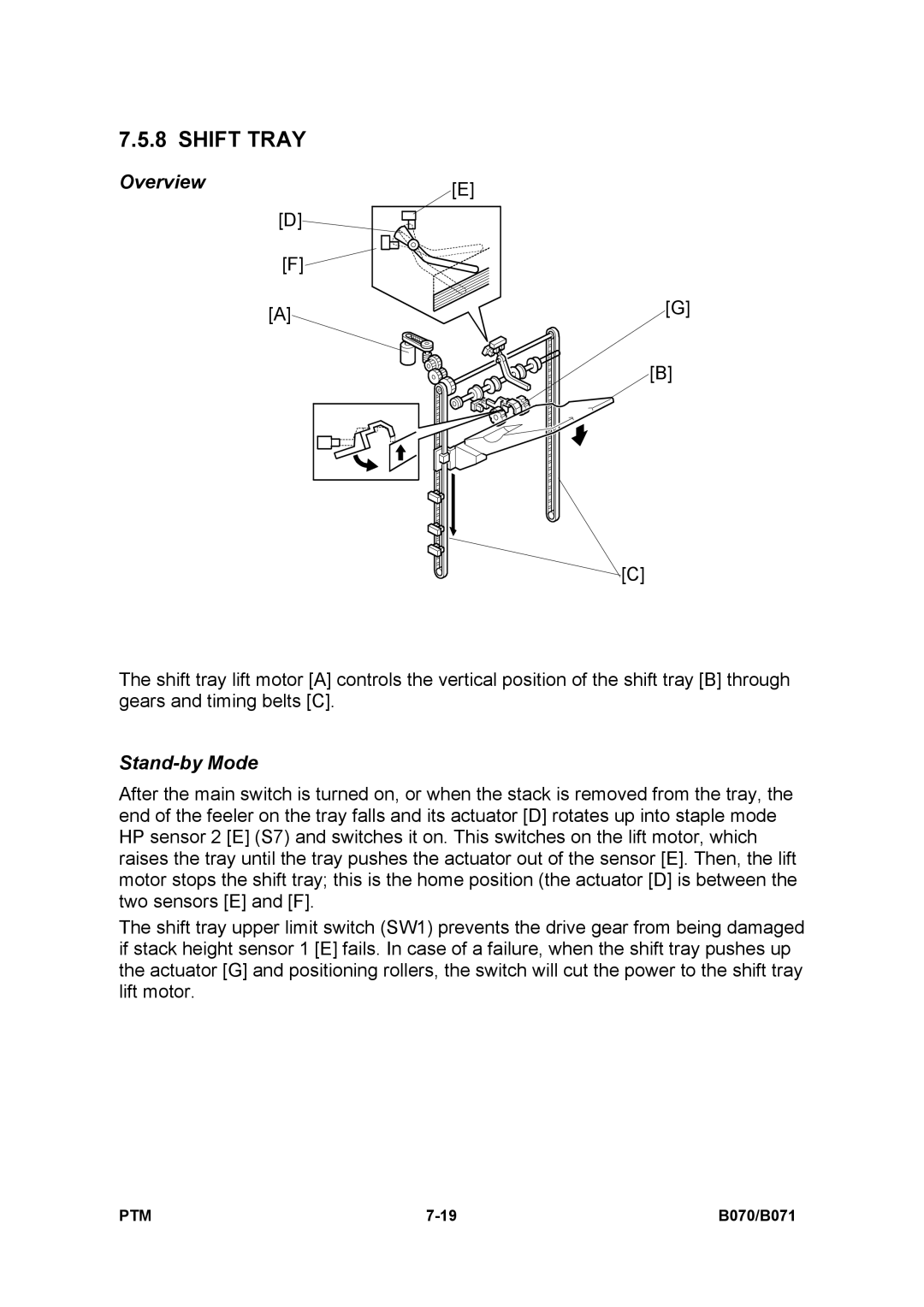
7.5.8 SHIFT TRAY |
|
Overview | [E] |
[D] |
|
[F] |
|
[A] | [G] |
| [B] |
![]()
![]()
![]()
![]()
![]() [C]
[C]
The shift tray lift motor [A] controls the vertical position of the shift tray [B] through gears and timing belts [C].
Stand-by Mode
After the main switch is turned on, or when the stack is removed from the tray, the end of the feeler on the tray falls and its actuator [D] rotates up into staple mode HP sensor 2 [E] (S7) and switches it on. This switches on the lift motor, which raises the tray until the tray pushes the actuator out of the sensor [E]. Then, the lift motor stops the shift tray; this is the home position (the actuator [D] is between the two sensors [E] and [F].
The shift tray upper limit switch (SW1) prevents the drive gear from being damaged if stack height sensor 1 [E] fails. In case of a failure, when the shift tray pushes up the actuator [G] and positioning rollers, the switch will cut the power to the shift tray lift motor.
PTM | B070/B071 |
